Changsha City, the capital of Hunan Province, is the province's political, economic, cultural, scientific, educational, commercial, and financial center. The city governs six districts—Furong, Tianxin, Yuelu, Kaifu, Yuhua, and Wangcheng—and three counties (county-level cities): Changsha County, Liuyang City, and Ningxiang City. The city hosts six national-level development zones and major strategic platforms such as the National Comprehensive Reform Pilot Zone for Building a "Resource-Saving and Environment-Friendly Society," the Changsha-Zhuzhou-Xiangtan National Independent Innovation Demonstration Zone, the Hunan Xiangjiang New Area, and the China (Hunan) Pilot Free Trade Zone (Changsha Area).
Located in northeast Hunan Province, Changsha lies between 27°51' to 28°40' north latitude and 111°53' to 114°15' east longitude. To the east it is bordered by Yichun and Pingxiang of Jiangxi Province; to the south, it is adjacent to Zhuzhou and Xiangtan; to the west, it is bordered by Loudi and Yiyang; and, to the north, it is connected to Yueyang and Yiyang. It covers an area of 11,816 square kilometers. The city stretches approximately 230 kilometers from east to west and about 88 kilometers from north to south. By the end of 2024, the city's total permanent resident population reached 10.6165 million.
In 2024, Changsha's regional GDP reached 1.526878 trillion CNY, up 5.0% over the previous year. Specifically, the added value of the primary industry was 48.503 billion CNY, growing 3.9%; the secondary industry achieved an added value of 545.705 billion CNY, increasing 6.3%; and the tertiary industry realized an added value of 932.670 billion CNY, rising 4.3%. The city's added value of industries above designated size grew by 9.6% compared to the previous year. Total fixed-asset investment increased by 2.3% over the previous year. In 2024, the city's total retail sales of consumer goods amounted to 552.492 billion CNY, up 4.2% from the previous year. The per capita disposable income of residents in the city was 63,660 CNY, increasing 4.0% over the previous year. Specifically, the per capita disposable income of urban residents was 69,658 CNY, up 3.5%, while the per capita disposable income of rural residents was 45,632 CNY, an increase of 5.6%.
Changsha is a historic and cultural city with profound heritage. The city name has endured for more than 3,000 years. It was the place where Qu Yuan, a great patriotic poet in the state of Chu during the Warring States Period (475 BC-221 BC) and Jia Yi, a renowned scholar in the Han Dynasty (202 BC-220 AD) once lived; a well-known Chu-Han City; and, the center of Confucian learning in Hunan. Its historical and cultural heritage, such as the Mawangdui Han Dynasty Tombs, the Four-Goat Square Zun, the Three Kingdom Wu bamboo slips, Yuelu Academy, and Tongguan Kiln, are renowned both in China and abroad. The 1898 Reform Movement in the late Qing Dynasty (1644-1911) and the old Democratic Revolution originated, among other places, in Changsha. The city is also one of the New Democratic Revolution' birthplaces, leaving behind the illustrious footprints of great figures such as Mao Zedong, Liu Shaoqi, Qu Yuan, Jia Yi, Huang Xing, and Cai E.
Changsha is an innovative city with advanced science and education. In 2024, the city was home to 56 general institutions of higher learning, 35 national key laboratories (including co-construction projects), 34 national engineering research centers (engineering laboratories), and 35 national enterprise technology centers. The total number of scientific and technological innovation and R&D platforms reached 3,413, including 152 national-level ones.
Changsha is a vibrant city that is both livable and business-friendly. Crowds gather at landmarks such as Wuyi Square, Orange Isle, Yuelu Mountain, and the Hunan Museum. Its flourishing night-time economy has gained widespread attention, earning it recognition as the world's first "City of Media Arts" and one of the top ten popular tourist cities in China. It has been awarded titles such as one of the Top Ten Cities with the most investment Attractiveness, one of the Top Ten Cities with the Highest Foreign Investors Satisfaction, the National Demonstration City for Law-based Government Construction, and the National Food Safety Model City. Changsha has also been consecutively named China's Happiest City for 17 years.
Furong District
Furong District covers an area of 42.8 square kilometers and has a permanent resident population of 645,000. With Liuyang River as the axis, it forms a basic pattern of "one river and two banks". It governs 13 sub-districts and one provincial-level industrial park (Changsha Longping Industrial Development Zone). It is the smallest district-level administrative region in terms of area in Changsha, but it has created nearly one-tenth of the city's economic output with only 1/276 of its land.
Furong District is the location of the Communist Party of China Hunan Provincial Committee and serves as the core urban area that undertakes the political functions of the provincial capital. It houses 9 central government agencies stationed in Hunan and 40 provincial-level units. As the "urban origin", it boasts a rich historical heritage, with the Ma Wangdui Han Tombs Site and Bai Guoyuan Huachongchi Historical Street preserving the city's memories, making it a culturally vibrant district. As the "central urban area", it has long been the traditional financial, business, and consumption center of the province. It is also the most urbanized district in the province, featuring the tallest building in Hunan, the Changsha IFS, the second tallest, the Jingtian Square, and the third tallest, the Shimao Global Financial Center, as well as well-known commercial districts such as Wuyi Square, Yuanjialing, and Wanjieli. It is the first district in the province to have a third industry added value exceeding 100 billion yuan and has consistently been listed among the top 100 districts in terms of high-quality development, investment competitiveness, innovation, and tourism comprehensive competitiveness. As the "Longping Core Valley", the area east of the Liuyang River in Furong District is one of the ten major urban areas in Changsha, and it is also the location of the Free Trade Zone and the "Longping Core Valley". Academician Yuan Longping, the "Father of Hybrid Rice", once worked and lived here for a long time. It is home to 7 academicians in the field of agriculture, over 2,500 senior technicians, 130 major innovation platforms including the Yuelu Mountain Laboratory, one of the four major laboratories in the province, 20 research institutes such as the Institute of Subtropical Agriculture of the Chinese Academy of Sciences, and leading agricultural enterprises like Longping High-Tech and Huazhi Biology. The modern seed industry here enjoys a high national prominence and is a globally renowned "international brand".
Looking ahead, Furong will strive to build a benchmark area for the modernization of new Changsha: solidify its position as the city's cultural center, deeply explore, protect, inherit and develop cultural resources, further answer the two integration questions of "the integration of culture and technology" and "the deep integration of culture and tourism", promote the city's cultural development, cultural industry growth and cultural benefits for the people; serve as the provincial political center, continuously improve the environmental quality, constantly enhance people's well-being, firmly hold the safety bottom line, and showcase the city's window image with the beauty of Furong; strive to become a national commercial center, leverage the advantages of financial industry agglomeration, continuously enhance the consumption level, cultivate and expand the building economy, intensify investment promotion efforts, improve the soft power of the business environment, and promote the optimization and doubling of industrial structure; build a global seed industry center, mobilize the entire district's strength to embrace the Yuelu Mountain Laboratory, Hunan Agricultural University and the Provincial Academy of Agricultural Sciences, intensify the development and construction of the Longping area, serve the "national major issue" of seed industry innovation, serve core technology breakthroughs, serve the local transformation of scientific research achievements and their radiating effect across the country, and continuously shine the seed industry's brand.
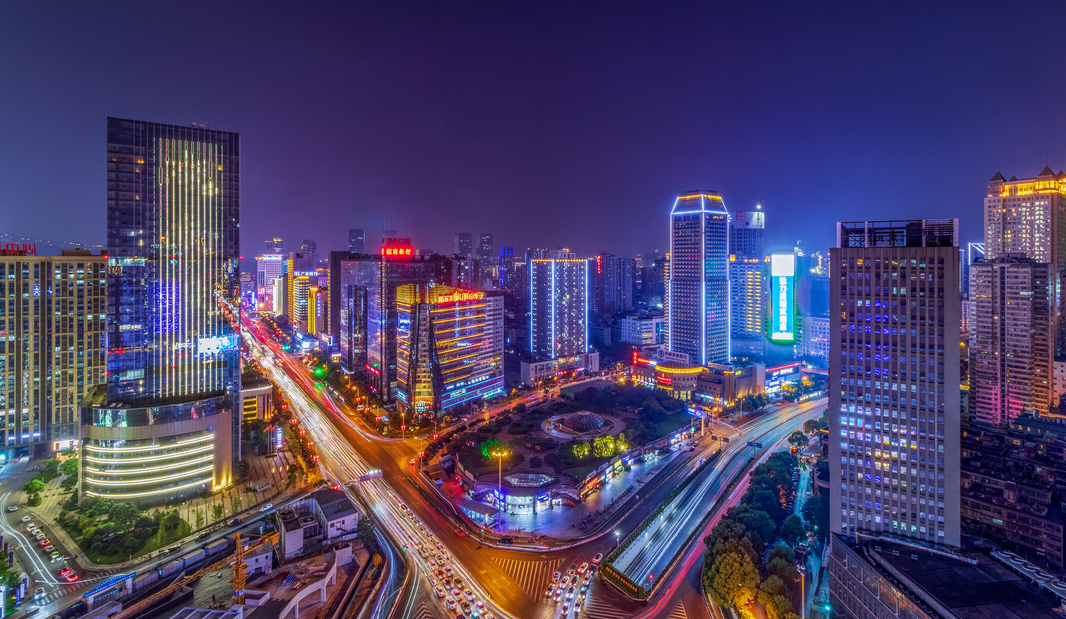
Tianxin District was named after the ancient Tianxin Pavilion. It stands in the south of Changsha City and is the location of the provincial government of Hunan Province. It is rich in 60% of the historical attractions of Changsha. It shines with the brilliance of thousands of years and radiates the glory of the era.
Tianxin is a cultural landscape area with profound heritage. It has well-known historical cultural heritages such as Tianxin Ancient Pavilion, Baisha Ancient Well, No.1 Normal School, and Jia Yi's Former Residence, as well as landmark modern cultural and sports facilities such as the New Century Sports Culture Center. It can be described as "Culture is everywhere, History is everywhere in sight".
Tianxin is a bustling commercial center area. The May Day business district and the Changsha-Zhuzhou-Xiangtan business district complement each other. The Huangxing Road Pedestrian Street, Taiping Old Street, and Pizhe Street and other characteristic commercial areas have a continuously growing commercial atmosphere. A number of commercial projects such as Xinyuehu, You'ao Outlets, Zhonghai Huanxu City, and Honggao Auto World have matured successively, presenting a favorable situation where traditional commerce and modern commerce complement each other and develop vigorously.
Tianxin is an environmentally beautiful ecological demonstration area. The Tianxin section of the Xiangjiang River shoreline is 32 kilometers long. The riverside scenic belt has unique advantages such as riverside (Xiangjiang River), island (Jiuzi Island), and mountain viewing (Yuelu Mountain). It has 57.65 square kilometers of ecological green heart of the Changsha-Zhuzhou-Xiangtan urban agglomeration and is the best display area of Changsha's "mountain-water-archipelago-city" charm.
Tianxin is an emerging core area of integration. The Changsha-Zhuzhou-Xiangtan intercity railway and urban subways connect internally and externally. The construction of the Changsha Outer Harbor, the provincial government new district, and the Mudiang area is accelerating. The southern area has been included in one of the six key areas of Changsha. Its location and transportation advantages are obvious. The development of key industries such as commercial logistics, modern finance, cultural creativity, geographic information, health care, tourism and leisure, and big data (geographic information), as well as new energy equipment, are developing simultaneously. National-level cultural (advertising) industrial parks, geographic information industrial parks, human resources service industrial parks are thriving. With the support of the provincial government and a large number of provincial-level administrative organs, the administrative radiation function has been greatly enhanced, and the strategic position has become increasingly prominent. A new administrative, economic and cultural center facing the whole province is accelerating its formation.

Hunan Xiangjiang New Area was established in April 2015 by the State Council, making it the 12th national-level new area and the first in Central China. It covers an area of 1,200 square kilometers, including the entire Yuelu District, part of Wuchang District and some townships of Ningxiang City. It has 5 national-level parks and 2 provincial-level parks, with a permanent population of 2.52 million. In October 2020, plans were initiated to build Xiangyin and Jiuhua New Areas. In June 2022, the provincial committee and the provincial government decided to optimize the management system, integrating Xiangjiang New Area, Changsha High-tech Zone and Yuelu District into one, operating under the "zone-government integration" model, achieving comprehensive advancement of integrated production and urban development, full sharing of resource allocation, and integrated economic and social development. The goal is to build the new area into a leading area for high-quality development, a new highland for reform and opening up, and a new benchmark for urban construction. In 2024, the regional GDP is expected to increase by 6%, with an economic volume exceeding 500 billion yuan, firmly ranking among the top of national new areas. The local general public budget revenue of the district will increase by 6.9%, with a tax ratio reaching 77.8%. The scale of industrial added value will increase by 10.2%, fixed asset investment will increase by 3%, and retail sales will increase by 4.3%.
Xiangjiang New District is a modern industrial area where advanced manufacturing is concentrated. It has cultivated and formed three trillion-yuan-level industrial clusters, accounting for one fifth of the 14 trillion-yuan-level industrial clusters in the province. The construction machinery and the new generation of independent and secure computing system clusters have been selected as national industrial clusters, becoming the "national team" of advanced manufacturing. The intelligent connected vehicles and advanced energy storage industries are leading the country. There are 57 listed companies, ranking second among all new districts in the country.
Xiangjiang New District is a high-tech innovation hub brimming with vitality. The Xiangjiang Laboratory and Yuelu Mountain Laboratory, among the "four major laboratories" in the province, are located in this district. Three top universities, 22 colleges and universities, 36 academicians from the two academies of sciences, and over 400,000 students have gathered at Yuelu Mountain. The Yuelu Mountain University Science City has become the "most powerful brain" and innovation source of Hunan Province. We are accelerating the construction of a 100-kilometer-long scientific and technological innovation corridor on the west bank of the Xiangjiang River and an 153-square-kilometer Xiangjiang Science City, and striving to build a new engine for scientific innovation in the central region. The intensity of R&D investment in the society is 9.5%, ranking first among all new districts in the country.
Xiangjiang New District is a strategic investment and business development paradise under the national policy umbrella. The new district integrates policies such as that of a national-level new area, a high-tech zone, a comprehensive bonded zone, and the reform of the two-type society. It replicates the policies of the free trade zone and systematically integrates the preferential policies of advanced regions across the country. It is committed to creating the best business environment in the new district, reducing the number of government services by over 2,000, and enabling 140 government services to be handled "nearby". The business environment ranks 8th among all new districts in the country. At the same time, the new district enjoys complete municipal economic authority and some provincial economic authority, enabling "new district affairs to be handled in the new district".
Xiangjiang New District is a pleasant and enjoyable place that integrates natural landscapes, cultural heritage and human elements. The district combines the features of "mountain-water-archipelago-city", with over 70% of its area covered by blue and green spaces, and a forest coverage rate of 42%, ranking first among all national-level new districts. Mount Yuelu records half of modern history and is also the birthplace of the Party's realistic thinking line. The Xiangjiang River and Zhongzi Island form the most beautiful scenic line in the district. A high-end quality city with complete comprehensive facilities is emerging on the west bank of the Xiangjiang River, becoming the new city hall of Changsha and a poetic place for people to live.
The mountains and waters of Zhoushizhou City are in full bloom, and the splendor of Xiangjiang River is at its prime. Currently, the Xiangjiang New District is comprehensively implementing the spirit of the 20th National Congress of the Communist Party of China, striving to be a banner leading the realization of the "Three Highs and Four New" beautiful blueprint, building a core leading area for global research and development cities, and using the district's practice to explore new paths for China's modernization and make new contributions.
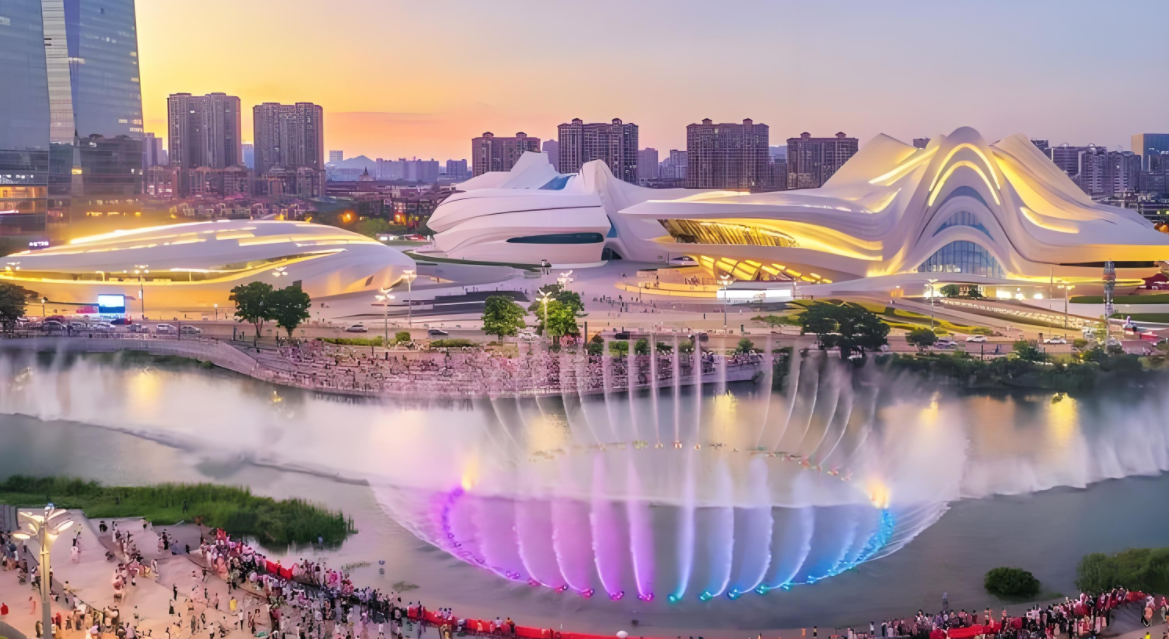
Yuelu District is a district in Changsha City, Hunan Province. It is located on the west bank of the Xiangjiang River in Changsha City. It is adjacent to Kaifu District and Tianxin District of Changsha City across the Xiangjiang River, connects with Xiangtan County of Xiangtan City in the south, borders Ningxiang City in the west, and is adjacent to Wangcheng District of Changsha City in the north. The total area is 558 square kilometers. [2] It belongs to the subtropical monsoon humid climate zone, with distinct four seasons and synchronized rainfall and temperature. [2] As of the end of 2024, the permanent resident population of Yuelu District was 1,693,000. [58] As of July 2025, Yuelu District has 17 sub-districts and 2 towns.
Yuelu District got its name from Mount Yuelu. [2] In 1949, the City West District was established. In 1955, it was renamed the West District. In 1960, Yuelu Commune was separated from Changsha County and Yuelu District was established. In 1974, Yuelu District was abolished and merged into the West District. In 1996, Yuelu District was established. [10] It has a total of 89 national, provincial and municipal cultural relics protection units, including Yuelu Academy and Aiwan Pavilion. There are 16 universities such as Central South University, Hunan University and Hunan Normal University located here.
In 2024, the regional GDP of Yuelu District was 214.36744 billion yuan, calculated at constant prices, increasing by 5.6% compared to the previous year. Among them, the value added of the primary industry was 112.213 million yuan, increasing by 4.1%; the value added of the secondary industry was 654,871,700 yuan, increasing by 8.2%; and the value added of the tertiary industry was 1,477,581,400 yuan, increasing by 4.4%.
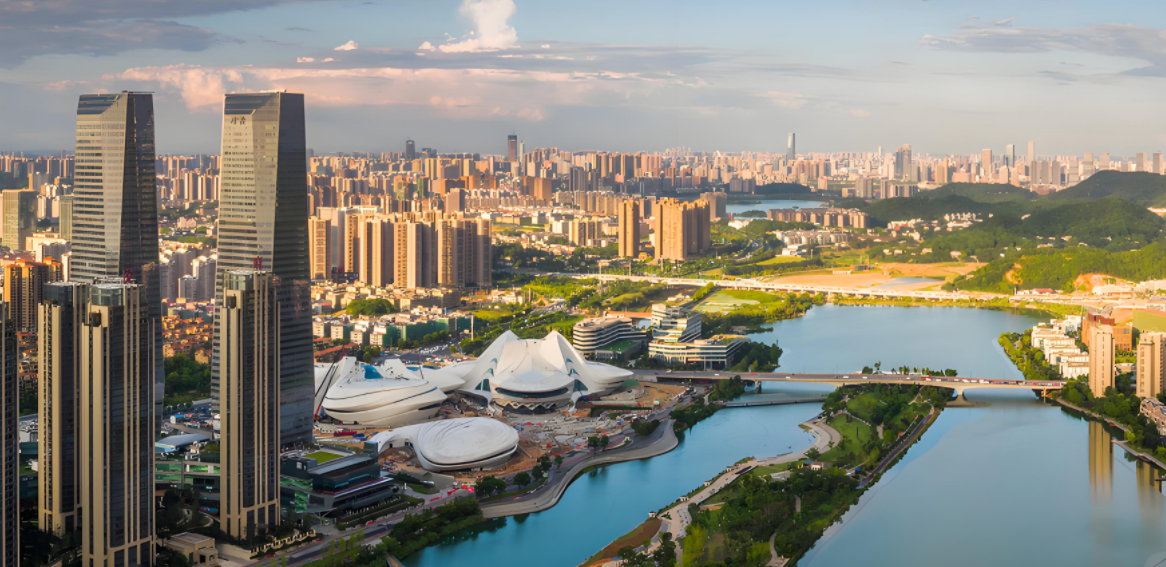
Kaifu is located in the northern part of Changsha. With a total area of 188 square kilometers and a permanent population of 894,100, it covers 16 sub-districts, 2 provincial-level industrial parks (Ma Lan Shan Video Cultural and Creative Industrial Park, Jin Xia Economic Development Zone), and 1 B-type bonded logistics center (Jin Xia Bonded Logistics Center).
Kaifu District is rich in culture and has a profound heritage. It was named after the thousand-year-old temple Kaifu Temple. It is an important birthplace of the "Chu-Han City" and Hupián culture, and also the birthplace of one of China's four famous embroideries, Xiang Embroidery. It boasts tourist attractions such as Kaifu Temple, Chaozong Ancient Street, Provincial Museum, City's "Three Museums and One Hall", Shaoping Xiang Embroidery Museum, World Window, and Underwater World. It also has research institutions like National University of Defense Technology and Xiangya Hospital, as well as cultural backbone enterprises such as Hunan Radio and Television Group, Hunan Publishing Group, and Hunan Newspaper Group. It is the core gathering place for "Television Hunan Army", "Publishing Hunan Army", and "Animation Hunan Army", and is undoubtedly a cultural innovation highland in Hunan and even throughout the country.
Kaifu District boasts a beautiful ecological environment. It is rich in water resources along the banks. The Xiangjiang River, Liuyang River, Lao Dao River, Sha River, Baishan River "one river and four rivers" flow around, and the "ten lakes" such as Nianjia Lake, Yue Lake, Qingzhu Lake, and Chu Jia Lake dot the area. The water area is nearly 20 square kilometers. The city thrives and becomes beautiful due to water, fully demonstrating the unique charm of Changsha's landscape and city. Ten parks including Memorial Park, Yue Lake Park, and Changsha Garden Ecological Park are scattered throughout the district. The peaks of Xiu Feng Mountain, Ge Yang Mountain, and Tian Yang Mountain rise one after another. The forest coverage rate of the entire district reaches 36.7%.
Kaifu District enjoys a superior location, with access to rivers and the sea. It is interconnected with 11 expressways such as Jingzhu Expressway. It is only a 20-minute drive from Huanghua International Airport and Changsha High-Speed Railway Station. It has the only deep-water port in Changsha, namely Changsha New Port, and the new railway freight station in Xinbei. It is the only county-level district in Hunan Province that integrates railway ports, water ports and road ports. It has launched the China-Europe Railway Express (Changsha) and the Hunan-South Guangdong-Hong Kong Direct Train. It is the core area for the cross-border e-commerce comprehensive pilot zone, the core area of the land port type national logistics hub, and an important section of Hunan's opening-up and rise, as well as an important freight hub in Central South region.
Kaifu District is an area with concentrated industries and great vitality. Kaifu District has established a regional economic development advantage characterized by more concentrated industries and a more optimized structure. Video culture and creative industries, intelligent manufacturing, modern logistics, and high-end commerce have gradually grown. It has three billion-yuan logistics industrial clusters in the fields of medicine, energy, and grain. There are over 300 financial headquarters institutions, branches, and new financial institutions. Headquarters of major enterprises such as Tencent, Kuaishou, and iQIYI have successively settled here. New-generation information technology, intelligent equipment, new materials, and new energy, as well as military-civilian dual-use and high-tech industries, have developed rapidly. There are 625 high-tech enterprises in Kaifu District. Kaifu is advancing steadily on the path of industrial upgrading and development.
Kaifu is peaceful and harmonious, with a strong sense of morality and kindness. Kaifu District was the first in the city to implement the "street calls, departments respond" mechanism. Its community governance experience has been promoted nationwide. It has maintained the title of "Safe County" in the province for 19 consecutive years, and the sense of gain, happiness and security of the people has continued to improve. The "three zones and three systems" construction has been advanced, and "five livelihood circles" such as a "10-minute convenient service circle", "15-minute health service circle", "15-minute cultural service circle", "15-minute sports fitness circle" and "20-minute high-quality education circle" have been created. This enables the "happiness to be upgraded right at home" to gradually become a reality. The construction of morality is in full swing, and the spirit of good deeds has taken root in people's hearts. There are 30 "National Moral Models" and "Chinese Good People" such as Ren Feili and Dong Zhi Ping. The first district-level good person museum in Hunan Province has been established, and the first "China Good Person" base has been set up, making it a truly "city of good deeds".
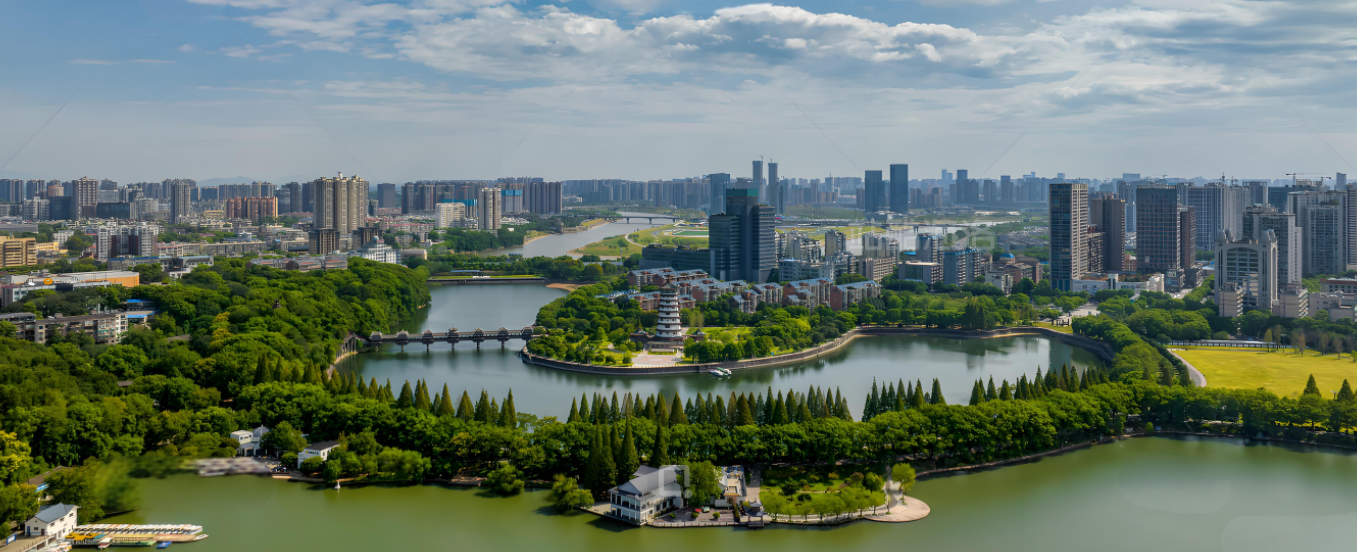
Yuhua District
Yuhua District is located in the southeast of Changsha urban area. The total area of the district is 292.08 square kilometers, with a permanent population of 1,295,800. It consists of 12 sub-districts, 1 town, 1 provincial-level industrial park, 1 free trade administration institution, 1 station management institution, and 1 municipal logistics industrial park. In 2024, the regional GDP reached 240.397 billion yuan, ranking first among all districts and counties in the province. In the national top 100 districts for high-quality development by the Urban Intelligence Research Institute, China Academy of Social Sciences, and the Small and Medium-sized Cities Research Institute, it has been ranked among the top ten nationwide and firmly holds the first place in the central and western regions.
"High-speed Rail City". The two major high-speed rail arteries, Jingguang and Huikun, converge at Changsha High-Speed Rail South Station, allowing direct access to 24 provincial capitals, municipalities, and the Hong Kong Special Administrative Region across the country. China's first high-speed maglev railway with complete independent intellectual property rights connects Changsha High-Speed Rail South Station with Huanghua International Airport, enabling one-stop air-rail transportation. The annual passenger volume exceeded 100 million, setting a new historical high.
"Industrial City". The acceleration of the integration of new energy vehicle manufacturing and services has led to the establishment of the Yuhua Base of BYD as a key layout area with large scale, complete models, and smooth operation. The construction of the construction management operation integration model in the construction industry has increased the total output value of the industry to one-third of the city and one-fifth of the province. The commercial sector has upgraded towards integrated domestic and foreign trade, with the Gaohao Large Market and Hongxing Global Agricultural Wholesale Center both entering the top ten of the national comprehensive market rankings. The digital economy has shown strong momentum, with the China Unicom Central South Research Institute and other entities successively establishing there. The low-altitude economy has taken the lead in planning and layout, and the province's first temporary airspace for unmanned aircraft test flight has been approved. There are over 300,000 business entities, firmly ranking first in the province.
"Innovation City". The Yuhua Economic Development Zone, the High-Speed Rail Area, and the Free Trade Zone have become important carriers for Changsha's construction as a global research and development city. The Liuyang River Intelligent Valley, the Central Engineering Design Innovation Valley, the Yuelu Mountain Laboratory Oil Tea Science and Technology Valley, and the Tongsheng Lake Artificial Intelligence Science and Technology Valley are advancing rapidly. There are 735 high-tech enterprises, and 208 innovation platforms such as key laboratories and technology research institutes. It ranks first in the national innovation百强 districts.
"Free Trade City". The 5.17 square kilometers of the Yuhua block in the Changsha Pilot Free Trade Zone is undertaking the mission of building the core area of the China-Africa Economic and Trade Deep Cooperation Pilot Zone, gathering six national-level platforms including the China-Africa Economic and Trade Expo, the National Market Procurement Trade Mode Pilot, the National Import Trade Promotion Innovation Demonstration Zone, and the China-Africa Technical Trade Measures Research and Evaluation Base.
"Ecological City". The green heart area within the district covers 179 square kilometers, accounting for more than one-third of the Changsha-Zhuzhou-Xiangtan region and more than two-thirds of the entire city. It possesses ecological resources such as the provincial forest botanical garden, Liuyang River, Guantang River, and Shiyan Lake. Guantang River has become the only river in the country to simultaneously receive the national "Two Mountains" practice innovation base and beautiful river awards.
"Happy City". Social undertakings have made significant progress, and it has been awarded honors such as the National Education Base for Intelligent Social Governance, the National Demonstration Zone for Teacher Morality Cultivation, the National Healthy Promotion Area, the National High-quality Service Demonstration Zone for Women and Children, the National Unit for Friendly Birth Work, and the National Standardized Unit for Social Assistance.
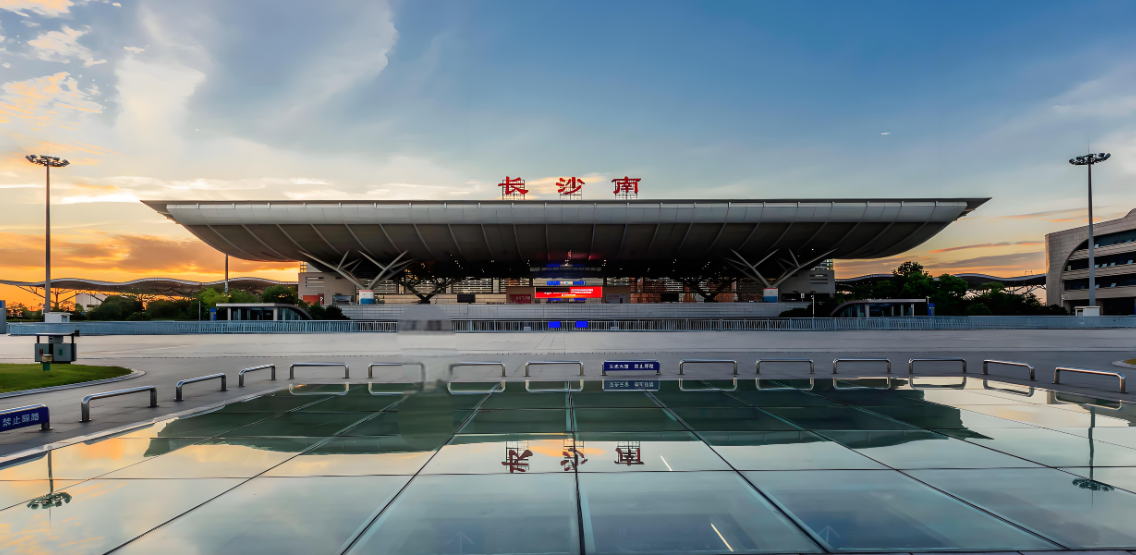
Wangcheng District
Wangcheng District, as the youngest district in Changsha City, Hunan Province, has been writing a new chapter of urban development with vigorous momentum since it was transformed from a county to a district in May 2011. The total area of the district is 969 square kilometers, and it consists of 11 townships and sub-districts. Among them, Leifeng Street and Baima Street are under the jurisdiction of the High-tech Zone, while Jinhuayuan Street, Jinchangqiao Street and Baibupu Town are under the jurisdiction of the Xiangjiang New District. As of the end of 2024, the permanent resident population of the district was 998,400, and the registered population was 557,600 (excluding Leifeng Street, Baima Street, Jinchangqiao Street, Jinhuayuan Street and Baibupu Town).
Wangcheng is located at the southern edge of Dongting Lake, in the western part of Changliu Basin. It is a transitional area between the long-heng hilly region and the coastal plain. Geographically, it is situated in the north-central part of Hunan Province, in the northern half of Changsha City. Its geographical coordinates are 28°08′29″N to 28°33′37″N, and 112°38′45″E to 113°02′27″E. It is adjacent to Changsha County to the east, connects with Kaifu District and Yuelu District to the south, shares land borders with Ningxiang City to the west, is linked by water and land with Heshan District of Yiyang City to the northwest, is connected by a river with Xiangyin County of Yueyang City to the north, and is close to Miluo City to the northeast, serving as the bridgehead for Changsha to connect with the Yangtze River Economic Belt and the Dongting Lake Ecological Economic Zone. The regional transportation network is well-developed and convenient. The Beijing-Guangzhou Railway, the Shichang Railway, the Beijing-Zhongguo Reversal Line, and the Changyi-Changgang Expressway intersect here. The main urban roads efficiently connect all parts of the city. The Changsha West Station within the area is an important comprehensive transportation hub, seamlessly connecting the Changsha-Zhuzhou-Xiangtan Intercity Railway with the Chongqing-Changsha-Xiamen High-Speed Railway, the Changjiu High-Speed Railway, and the Changxi High-Speed Railway, etc., forming a multi-level and three-dimensional transportation pattern.
This land, carrying the red heritage, is not only the hometown of the great communist fighter Lei Feng, but also a model where historical culture and ecological resources blend together. As a national ecological civilization demonstration zone and a national all-for-one tourism demonstration zone, it boasts the longest Xiangjiang River shoreline in the urban area of Changsha, the largest lake (Tuantou Lake), the highest peak (Heimifeng), and the largest river island (Moon Island). It perfectly embodies the urban imagery of "mountains, waters, islands, and the city," making it the most comprehensively endowed urban core area in Changsha in terms of natural elements. The entire district has 10 A-level scenic spots, including 6 AAAA-level tourist attractions such as Lei Feng Memorial Hall, Heimiao Peak National Forest Park, Qianlong Lake Tourist Area, Jinggang Ancient Town, Xinhua Le Cang Ancient Town Scenic Area, and Changsha Tongguan Ancient Kiln National Archaeological Heritage Park, as well as 4 AAA-level tourist attractions such as Ouyang Xiu Cultural Park, Xin Kang Play Village, Baiyuan Ecological Tourism Area, and Cha Ting Flower Sea. In addition, there is 1 national-level tourist resort and 8 provincial-level five-star farmhouses, providing tourists with diverse leisure and vacation as well as cultural experience options.
In 2024, Wangcheng District will meticulously craft the urban charm, enhance quality and elevate prestige, and the future new city will move towards a higher level. "Xiangjiang Future City" has risen strongly. The Dazehu area is growing vigorously and announcing success stories one after another. The future city with "a network of roads, a formed wetland, mature facilities, numerous enterprises, and developing momentum" is unstoppable. "The New Provincial Capital Landmark · Xiangjiang Future City" has gained widespread fame. The Xiangluozhou Bridge has been completed and opened to traffic, making the "Xiangjiang Diamond" shine across "One River and Two Banks". The integration process is accelerating, the north extension of Metro Line 4 in Wangcheng District has officially started, the construction of the landscape road of Xiaoxiang Avenue is advancing steadily, the rapidization renovation of 8 nodes on Xiaoxiang North Road is underway, the construction of the three-ring tunnel of Yinsan Road is progressing smoothly, and it has fully integrated into the "half-hour" transportation circle of the municipal government. The "Liveable and Happy City" has taken on a new look. We continue to fight hard on the battles for blue skies, clear waters, and clean soil, regularly implementing the river, lake, and forest chief system, the "Dingtaibei Clear Water" and "Ten-Year Fishing Ban" work, the improvement rate of air quality index leads the city, the water quality compliance rate of national and provincial control sections and the water quality compliance rate of centralized drinking water sources remain at 100%, the results of source prevention of soil pollution are obvious; we have been the first in the province to be included in the national environmental health management pilot area, and the green mountains and clear waters have gained greater luster.
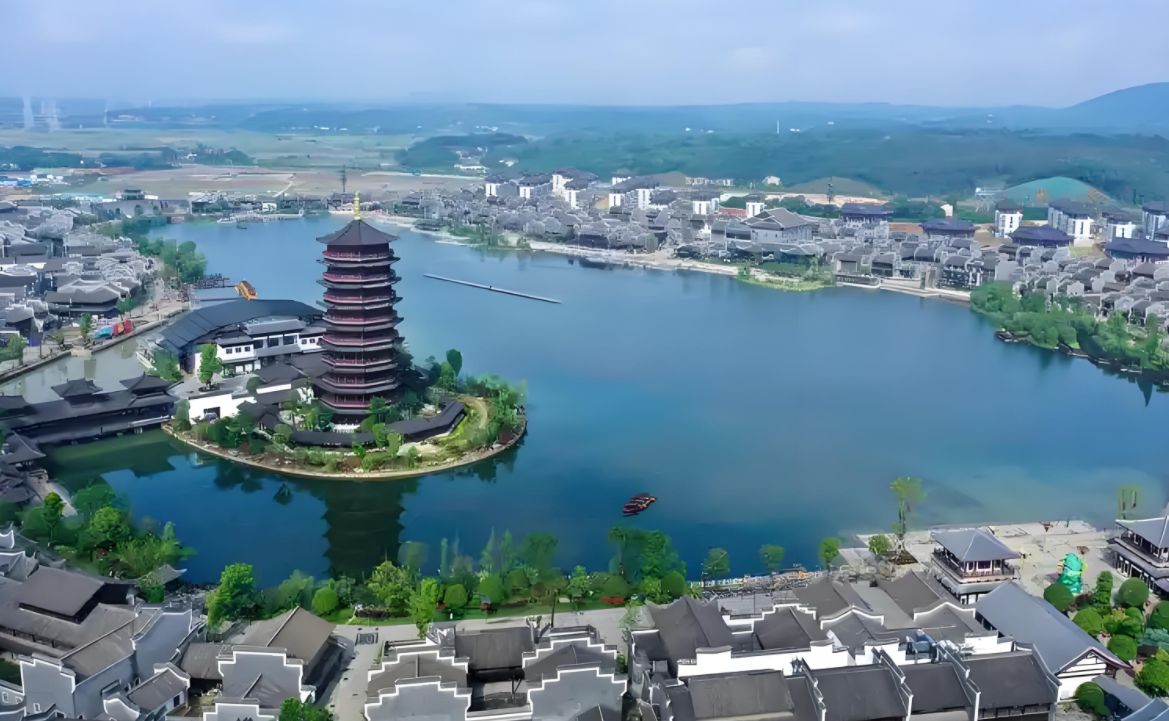
Also known as “Xingsha,” Changsha County boasts a superior location and convenient transportation. Since ancient times, it has been praised as the “Leading County of Three Xiangs, Key Town of Chu.” Nationally, it is situated in the heart of Central China, serving as a convergence point between the Yangtze River Economic Belt and the radiating influence of the Guangdong-Hong Kong-Macao Greater Bay Area, linking north and south while bridging east and west. Within Hunan, it lies at the core of the Changsha-Zhuzhou-Xiangtan metropolitan area, strategically positioned on the east bank of the Xiang River and the eastern part of Changsha. The “Hunan Air Eastern Gateway,” Huanghua International Airport, is located here. The Beijing-Guangzhou, Shanghai-Kunming, and Chongqing-Xiamen high-speed railways intersect to form a “米”-shaped network. The county is also home to China’s first domestically developed medium-low-speed maglev line, connecting the airport to the high-speed rail station. Highways such as the Beijing-Hong Kong-Macao, Wuhan-Shenzhen, and Changsha-Zhuzhou traverse the area, with a total road mileage exceeding 4,000 km. Seven metro lines form an extensive network, and Changsha Port is just a 20-minute drive away. Today, 1.4531 million residents thrive across its 1,756 square kilometers, which comprise 18 towns and sub-districts.
Steeped in history and culture, Changsha County has a legacy spanning over 2,200 years. Luminaries such as Qu Yuan, Jia Yi, Li Bai, Du Fu, and Su Shi left their marks here. As a cradle of revolutionary heritage, the county embodies the saying, “Within ten steps, there is fragrant grass.” It is the hometown of Huang Xing, a key figure in the 1911 Revolution, and Tian Han, lyricist of China’s national anthem. The county also gave birth to revolutionary martyrs like Yang Kaihui, Chairman Mao’s close comrade and wife, and Chen Shuxiang, the Red Army division commander renowned for his heroic sacrifice. It is the hometown of Miao Boying, the first female member of the Communist Party of China; Li Weihan, an early Party leader; and Xu Guangda, a founding general of the People’s Liberation Army. During the Battle of Changsha, Yingzhu Mountain served as a key battleground where tens of thousands of Japanese invaders were defeated, leaving a lasting legacy of revolutionary spirit.
Economically robust and industrially advanced, Changsha County is renowned as the “Top County in Central and Western China.” In 2024, its GDP surpassed the 100-billion-yuan mark in the first half of the year, with annual growth reaching 6%. In national county rankings, it leads in key indicators: 1st in basic economic competitiveness in central China, 3rd in investment potential, 4th in comprehensive economic and social development, 4th in green development, 4th in technological innovation, 4th in new urbanization, 5th in comprehensive strength, 5th in basic economic competitiveness, 7th in smart city development, and 9th in investment competitiveness. It has been rated an A+ county for modern, high-quality development, consistently leading in central and western China. The county is celebrated for the saying, “Hunan’s industry looks to Changsha, and Changsha’s industry looks to Xingsha.” Its construction machinery cluster is recognized as a national advanced manufacturing hub, and its automotive and parts industry once exceeded 100 billion yuan in output. The CNC grinding machine cluster has been designated a national specialized SME cluster. Sany Heavy Truck was again listed as a global unicorn enterprise, while CRCHI ranks first among the world’s top five tunnel engineering equipment manufacturers. Three companies, including Sunward Intelligent, are among the global top 50 construction machinery manufacturers. The automotive and parts industry is advancing toward high-end and green production, with GAC Aion producing a new energy vehicle every 53 seconds. In 2024, the electronic information industry saw a 31.5% growth in output. Key projects like “Two Cities, One Bay, One Base” are accelerating, attracting high-level R&D centers such as the Hunan University Future Industry Development Research Center and the Songya Lake Artificial Intelligence Innovation Center. The Central South University-Sany Tech Town industrial innovation platform has been established, while the Megmeet Global R&D Center and Hicobio Bonded R&D Center have commenced operations.
A pioneer in reform and openness, Changsha County lives by the motto, “No reform, no Xingsha; no openness, no Xingsha.” As one of China’s 18 exemplary reform and opening-up regions, it established the Xingsha Economic and Technological Development Zone in 1992, which has since evolved into the national-level Changsha Economic and Technological Development Zone, pioneering integrated county-district development. Key reforms have advanced steadily, with the county selected in 2024 for national pilot programs in agricultural water pricing reform, agricultural water rights reform, and reservoir property registration. It pioneered the establishment of sci-tech innovation funds and specialized industrial funds in Hunan, hosting the province’s first QFLP fund. As a top performer in institutional innovation within the Hunan Pilot Free Trade Zone, its “Postal Express Cross-border” integrated supervision model was recognized as a national best practice. Its low-altitude airspace management reform and standardized market-oriented security services for exhibitions are national firsts. Serving as a bridgehead for opening up in Changsha and Hunan, the county has established economic ties with over 200 countries and regions. In 2024, its total import and export volume accounted for 18% of the provincial total, ranking first among Hunan’s counties. As the province’s only flagship project for China-Africa trade, the China-Africa Economic and Trade Headquarters Building is now operational. The county has hosted major international events such as the China-Africa Economic and Trade Expo, the Boao Asia Forum Economic Security Conference, and the China International Agricultural Machinery Exhibition. The world’s largest visa service provider, VFS Global, has fully operationalized its visa application center here, handling 40,000 applications annually. Changsha County has also established a sister-city relationship with Montargis, France.
A livable and business-friendly destination, Changsha County is home to Songya Lake National Wetland Park and three provincial forest parks—Yingzhu Mountain, Beishan, and Dashanchong—offering stunning landscapes. The Liuyang and Laodao Rivers meander through the area, attracting tens of millions of visitors annually. Environmental quality continues to improve, with air quality rated “good” 90.2% of the time in 2024, and water quality in provincial control sections and drinking water sources meeting 100% compliance standards. All administrative villages have paved roads and public transport, earning the county the title of “National Demonstration County for Well-Managed Rural Roads.” Sewage treatment and piped gas coverage extend to urban and town areas. The county hosts 27 banks and 17 higher education institutions, with high-level talent accounting for a quarter of the city’s total. Educational integration with the city is accelerating, with the county ranking first in comprehensive educational development and quality among China’s top 100 counties. In 2024, it successfully partnered with four prestigious schools, including Changsha Lushan International Experimental School. The county’s maternal and child health hospital became Hunan’s first tertiary-level institution of its kind at the county level, while the Changsha County People’s Hospital (Xingsha Branch of Hunan Provincial People’s Hospital) commenced operations. The basic pension for rural and urban residents is the highest in the province, and health insurance coverage remains stable at 95.1%, with outpatient services fully covered in village clinics. As a pioneer in common prosperity, the county saw per capita disposable income grow by 4.3% in 2024, with rural residents’ income rising by 5.4%, narrowing the urban-rural income ratio to 1.32:1. For 18 consecutive years, it has been recognized as “China’s Happiest City (County-Level).”
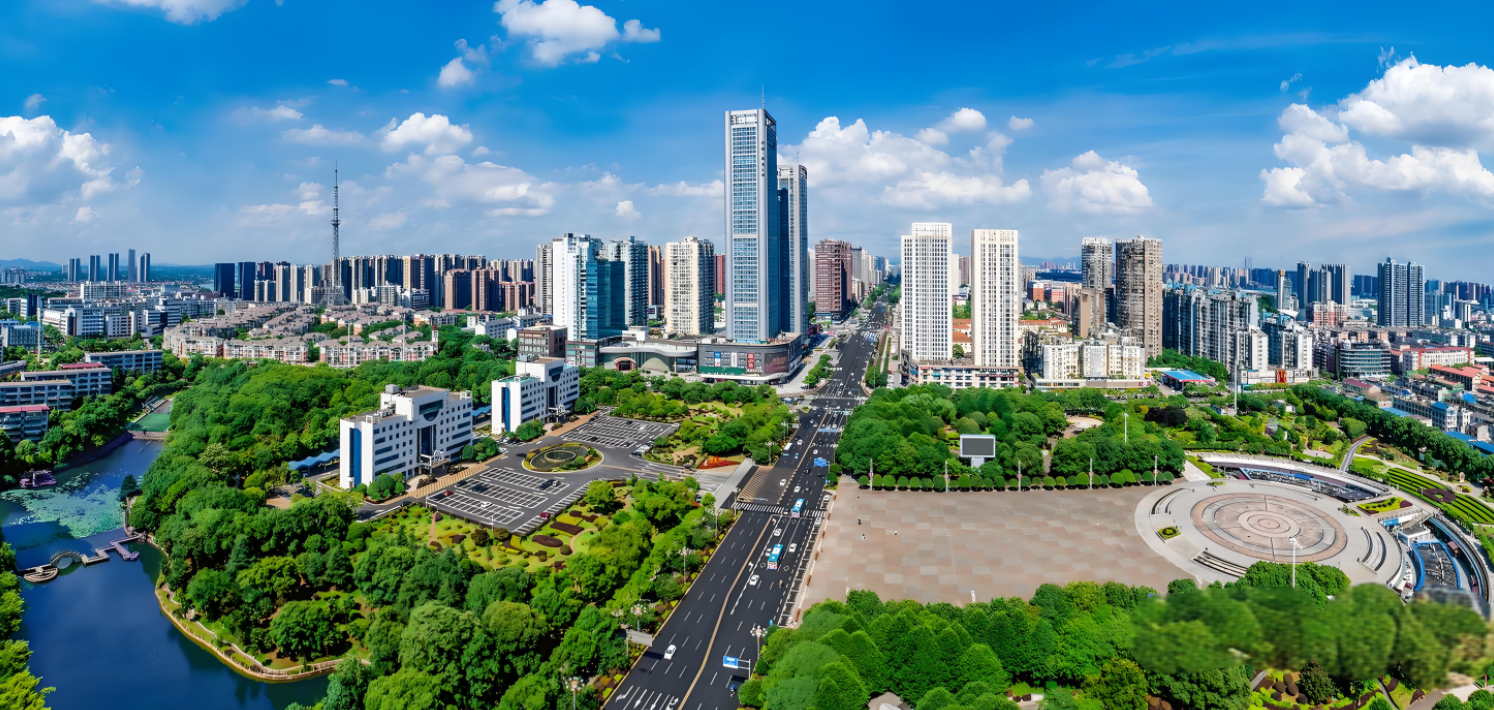
Prior to the founding of the People's Republic of China, Liuyang was primarily an agricultural economy. Throughout the prolonged feudal era, it maintained a self-sufficient natural economic structure. After the Qianlong period of the Qing Dynasty, handicraft products based on agricultural raw materials gradually expanded, and market exchange saw moderate growth. By the late Guangxu period, the opening of ports in Yueyang and Changsha stimulated the export of local agricultural products, transitioning the economy into a semi-subsistence system with emerging commodity economy characteristics. During the Republican era, commodity production and exchange continued to develop, but frequent wars and social instability led to significant fluctuations. By the time of the founding of the People's Republic of China, the local economy remained largely semi-self-sufficient.
After the establishment of the People's Republic, particularly since the reform and opening-up, under the leadership of the Liuyang Municipal (County) Committee of the Communist Party of China and the Municipal (County) People's Government, Liuyang has adhered to the general principle of seeking progress while maintaining stability, adapted to the new normal of economic development, and resolutely implemented the decisions and deployments of the central, provincial, and Changsha municipal authorities. Through pioneering innovation and determined efforts, Liuyang has achieved remarkable economic growth, a transformed urban and rural landscape, comprehensive progress in social development, and a significant improvement in living standards—from basic subsistence to all-round moderate prosperity.
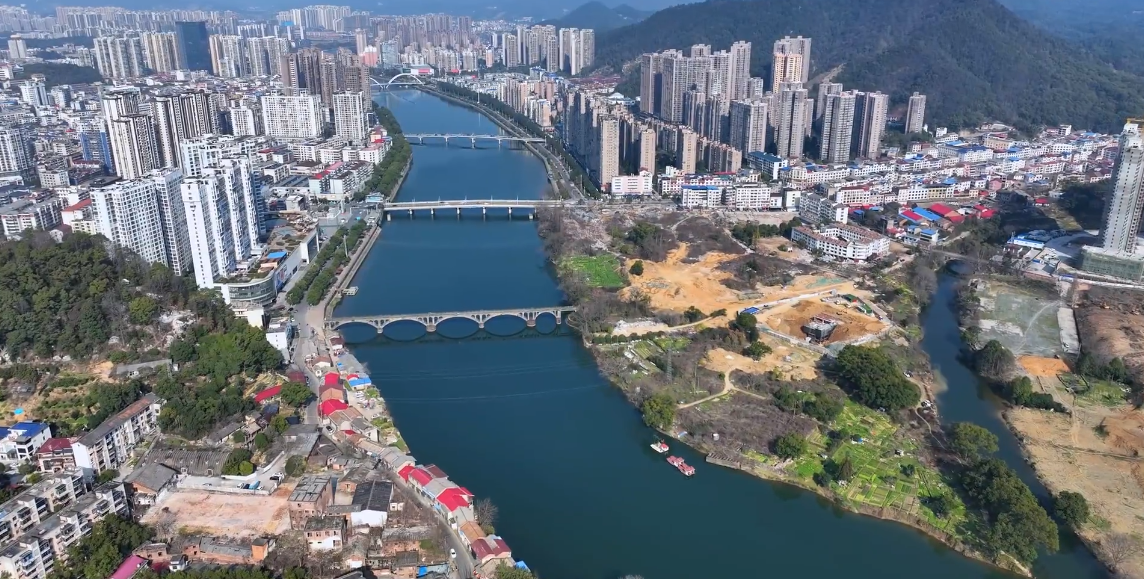
Ningxiang City
Ningxiang City is located in the north-central part of Hunan Province, in the western region of Changsha. It borders Wangcheng District of Changsha to the east; Xiangtan County, Shaoshan City, Xiangxiang City, and Louxing District of Loudi to the south; Lianyuan City and Anhua County to the west; and Taojiang County and Heshan District of Yiyang to the north.
Currently, Ningxiang covers an area of 2,912.09 square kilometers. The Municipal People's Government is located at No. 398, Section 5 of Jinzhou Avenue, Yutang Street. The city administers four sub-districts: Yutang, Chengjiao, Lijingpu, and Baimaqiao; 21 towns: Daolin, Huaminglou, Donghutang, Xiaduopu, Shuangjiangkou, Meitanba, Batang, Huitang, Shuangfupu, Laoliangcang, Liushahe, Xiangzikou, Longtian, Hengshi, Huilongpu, Huangcai, Dachengqiao, Qingshanqiao, Jinzhou, Datunying, and Zifu; and four townships: Jinghuapu, Yujia'ao, Shatian, and Weishan. In total, it oversees 278 villages and communities.
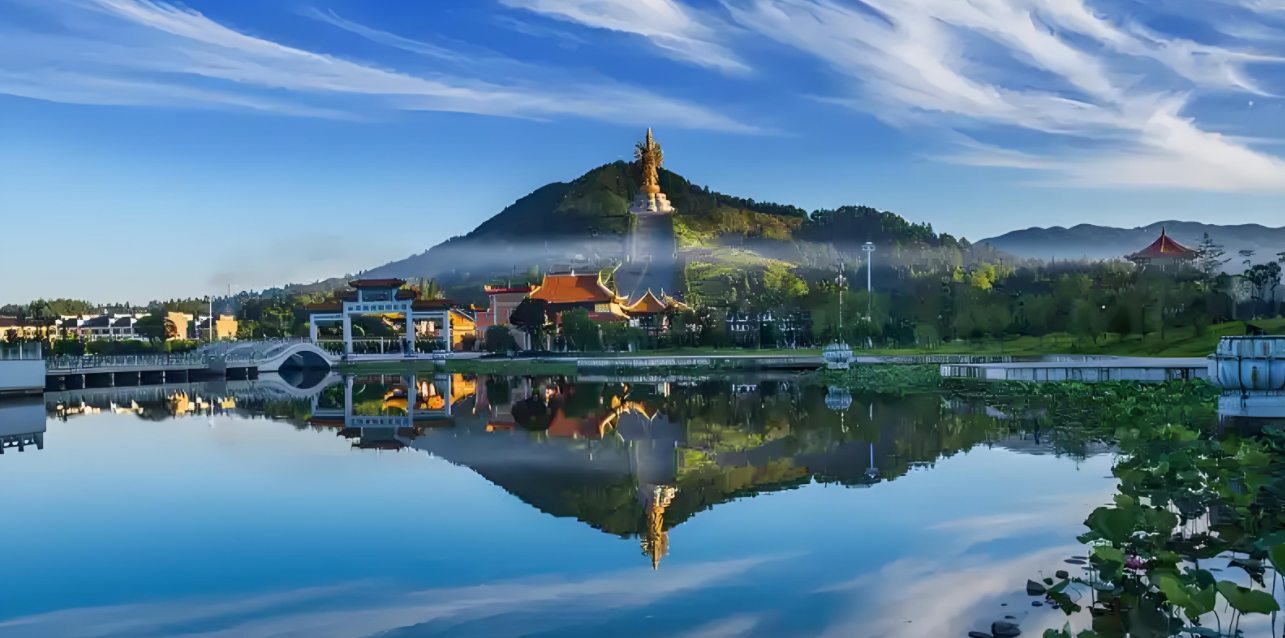








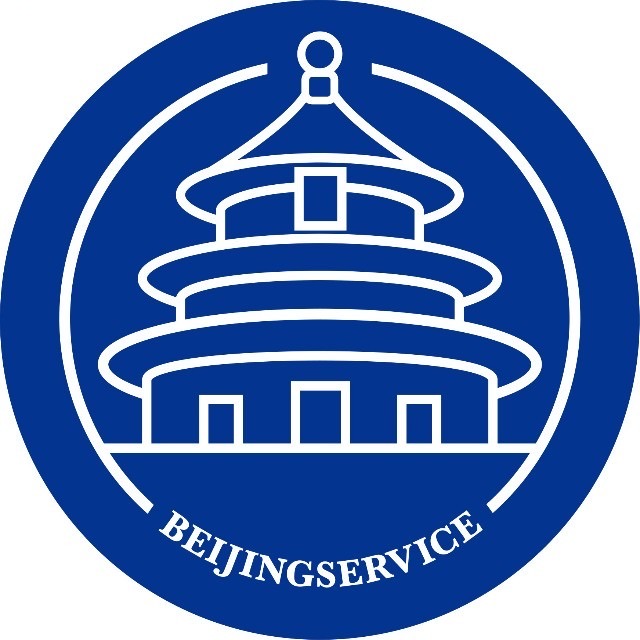
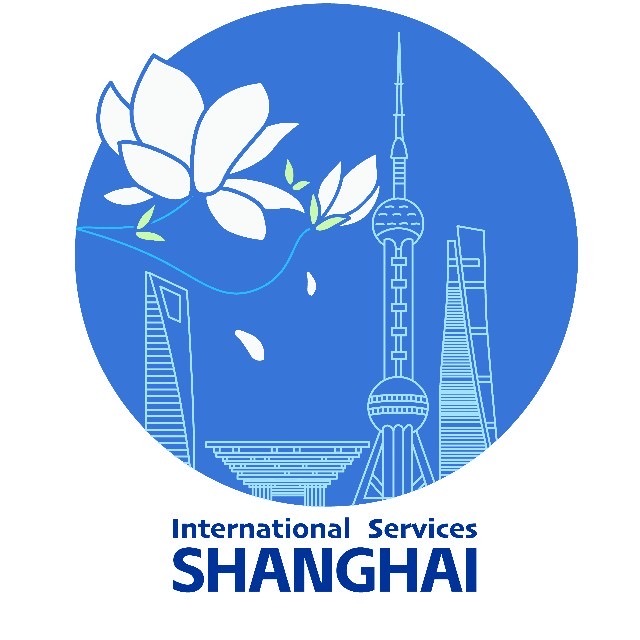



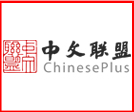
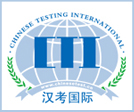
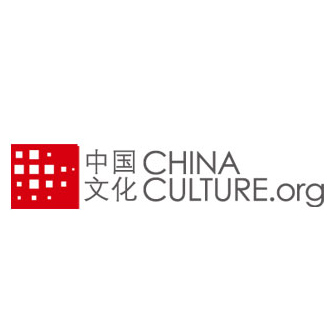
 京公网安备
京公网安备